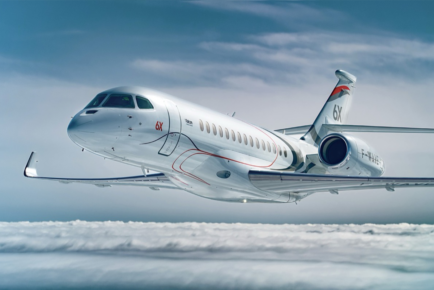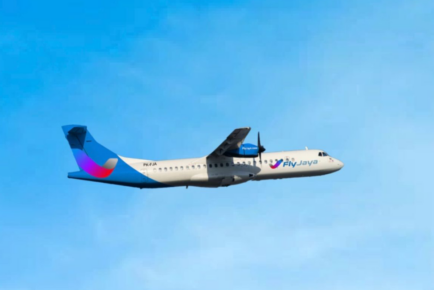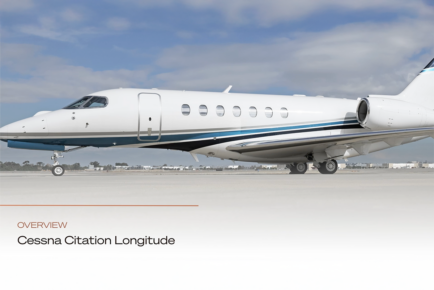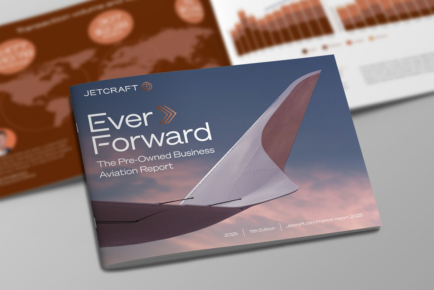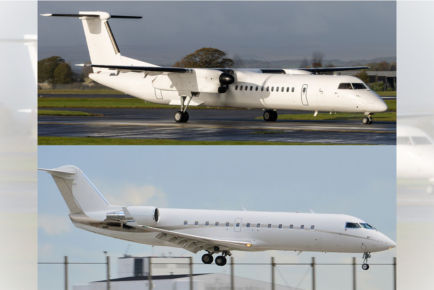
February 2013; CEO Middle East – Purchasing an executive or private aircraft may well be one of the most expensive acquisitions an individual or company ever makes. It certainly deserves careful consideration so, over the next three issues of CEO Middle East, we are going to examine the why, what and how of aircraft ownership.
THE WHY — looks at the tangible and intangible benefits of aircraft ownership. How a private aircraft might enhance your lifestyle or create value for your company. What are the advantages and disadvantages of ownership and what of the alternatives?
Once a decision has been made to acquire a private aircraft, THE WHAT — examines the choices available to you. Essentially, this is the Needs Analysis phase of the acquisition process and looks closely at the mission requirement. A thorough examination of the utilisation pattern, the routes and passenger loads, the likely destinations, support issues and of course, budgets, builds a picture that will identify a shortlist of suitable aircraft.
THE HOW — offers some advice on how to go about buying an aircraft whilst avoiding the pitfalls that catch the unwary or uninitiated. And once the aircraft has been acquired it has to be properly managed and operated. The How also looks at alternative forms of management and operations for the aircraft. Should you have your own flight department or should you give the aircraft to a suitably qualified management company? Should the aircraft be for private use only or should it also generate revenue by being offered for commercial (charter) use? What registry should the aircraft be on? And where is the best location to base the aircraft?
These articles are provided by Mike Cappuccitti, a former military pilot turned aircraft sales professional, who has been based in the Middle East for the past 20 years. Mr. Cappuccitti looks after the Middle East interests of Jetcraft Corporation, one of the world’s foremost jet brokers specialising in the acquisition, trade, sales and brokerage of all makes and models of both new and pre-owned private and VIP jet aircraft.
___________________________________________________________________________________________________
April 2013: CEO Middle East — In this era of globalization, no longer should a private aircraft be seen as the boss’s perk but rather a valuable tool and a powerful asset, argues Mike Cappuccitti, Jetcraft’s Middle East sales director.
PART 1 – THE WHY
A wealthy individual may want a private aircraft to simply enhance his or her lifestyle. Travelling in comfort and security, avoiding queues and airport delays, going directly to a destination rather than through a hub (which may be miles from the final desired location); these are just some of the advantages the private aircraft can bring. They may not be particularly concerned as to the cost effectiveness of the purchase or the operation. They just want what an aircraft brings them in terms of lifestyle.
It’s a different story for a company or enterprise. It is more about the economics and creating value for the company. The tangible and intangible benefits must be weighed against the costs, both acquisition and operating, to arrive at a conclusion as to whether an executive aircraft acquisition is the right choice for the company.
Imagine the Boardroom scene. The agenda has reached item 2, “Acquisition of a Corporate Jet”. The CFO is on one side, the COO and Marketing Director on the other and the CEO, undecided, sits at the head of the table. Spreadsheets abound – and the bottom line is all red.
Of course it is – owning and operating an aircraft costs money. Even if the aircraft is operated on a revenue generating basis when not in use for the company, it will rarely pay its way from a purely financially clinical viewpoint. So why do so many successful companies own a private jet? It is because there is a direct correlation between aircraft ownership and wealth creation. The facts and figures are available in a report commissioned by the NBAA (National Business Aircraft Association of the US). But just trust me on this while you read on.
To use a cliché, time is money and one big tangible benefit of a private aircraft is saving time. Can you imagine trying to fit in meetings in Riyadh, Manama and Kuwait in one day using a commercial airliner. Seven or eight hours minimum would be spent at the airport pre and post flight.
That’s the obvious advantage but there are many more. The security of having your own crew and maintenance staff. The ability to work onboard without being overheard by unknowns. Point-to-point travel rather than using hubs. Flying customers or suppliers to your facilities. Transporting vital equipment and valuables or charitable usage for medical evacuations and disaster relief. And most importantly, getting in front of your customer to close a deal before your competitor even gets his ticket booked.
Developing a practical utilisation strategy is vital to a cost effective operation; as is the choice of aircraft and the method of managing and operating the asset. More about that in Part 2 and 3 of this series but, for now, let’s look at a simple rule of thumb. If company utilisation is 100 hours or less per year, then consider charter as the likely best option. If utilisation is between 100 hours and 250 hours, a fractional ownership scheme or a jet card might be the way to go. Anything in excess of 250 hours a year and ownership comes into its own. Of course, this is simplistic and is again a clinical way of looking at the options. It needs to be overlaid by an assessment of the intangible benefits and how they might influence the company’s ability to create value.
What we haven’t mentioned so far is the CFO’s desire not to have an asset such as an aircraft on the balance sheet or the tax benefits that might accrue through ownership. This last point is generally not an issue in most Middle East countries but were it to be so, it does need consideration. If it is desired to keep the aircraft off the balance sheet, there are perfectly simple and acceptable solutions via SPC’s and leasing solutions.
Clearly, not every company will benefit from aircraft ownership and, frankly, most will not. But any company that has regional and international facilities and/or customers and is financially capable of owning and operating an aircraft should give it some consideration. In this era of globalisation, no longer should a private aircraft be seen as the boss’s perk but rather a valuable tool that can, if correctly utilized, be a powerful asset that can considerably enhance wealth creation.
In Part 2, we assume the decision has been made to acquire an aircraft. The article focuses on The What. Like cars, aircraft have different features and capabilities and with so many choices available, it is important to conduct a thorough needs analysis. We look at the mission profile that will help us identify the most suitable aircraft to meet the requirement.
___________________________________________________________________________________________________
Tailor-made to Fly
May 2013; CEO Middle East —Mike Cappuccitti, Jetcraft’s Middle East sales director, believes that understanding any budget restrictions will greatly assist in the choice of which aircraft to buy.
PART 2 – THE WHAT
If, after digesting Part 1 — The Why, you decided to acquire a private or corporate aircraft, the next question is which (or what) aircraft should you purchase? The first step in the decision-making process is a needs analysis to define the mission profile. Using the analogy of a car, you wouldn’t buy a pickup truck to transport VIPs any more than you would use a two-seat sports car to transport farm equipment.
Some simple questions can have complex answers. For example, a question might be posed “Can aircraft X fly from Dubai to London without refueling?”. The answer could be a no, a yes or even a maybe. Simplistically, on any given day, the range of an aircraft will depend on the temperature (both at the departure airport and en route), the wind en route and the amount of fuel that can be carried; which might be less than maximum because of the payload (passengers and baggage) necessitating less fuel in order not to exceed the maximum takeoff weight. From a mission profile perspective, a thorough understanding of the routes and likely payload is necessary.
Generally speaking, if the aircraft will always be flying into and out of major airfields used by airliners, then the runway and climb performance is unlikely to be an issue; as nearly all private jets will outperform airliners. However, if destinations include regional or smaller airfields then takeoff and landing distances and climb performance need to be considered.
What about the aesthetics of the aircraft? For example, the height, length and width of the cabin; which all adds up to cabin volume and the extent of personal space. If average flights will only be a couple of hours, passengers may be happy to be restricted to sitting throughout the flight – in which case a smaller cabin with limited headroom could be acceptable. Longer flights generally point to the need for a larger cabin aircraft where standing and moving about can be done with ease. Calls of nature need to be adequately catered for and whilst on a short flight an emergency potty closet might be acceptable, it would hardly work on a longer flight for multiple passengers. And going to the other end of the scale, is a Stateroom required with bedroom and en suite bathroom? Is an entourage section needed for staff? What about catering? Again, on the shorter flights and smaller aircraft you might just take a cool box with a thermos or soft drink and some sandwiches. On the longer flight something more substantial is required and therefore a galley (kitchen) is a must. All very obvious but very necessary considerations.
The need for on-board facilities such as communications and in-flight entertainment systems is another question to be asked. Again, on short flights this is not so important but on the longer flights, especially in this era of rapid information transfer, having satellite communications and Wi-Fi internet is almost a must.
The question of budget is clearly an important one. Not just the capital budget to purchase the aircraft but the ongoing operational budget. Operational costs are generally in two parts; the costs associated with the ownership of the aircraft, termed fixed costs and the costs associated with flying the aircraft, termed direct and variable cost. Fixed costs include crew, insurance, hangarage or parking, scheduled maintenance, management and administrative costs.
These have to be paid whether the aircraft flies or not. Using the car analogy again this would equate to road tax (or registration fees), insurance and garage or parking fees and calendar based maintenance. Direct and variable costs include such expenses as fuel, oil, landing fees, passenger handling charges and catering. Understanding any budget restrictions will greatly assist in the choice of aircraft. Not only is there a vast variance in purchase prices but there is an equally big variance in operating costs between different types of aircraft.
Of course, many buyers of aircraft are familiar with this needs analysis process but many more are not. If you are not a seasoned aircraft buyer then the best possible question to ask is “Who can help me select the right aircraft?” And there is an equally simple answer. Seek advice either from a professional business aviation consultant/advisor or from a reputable business aircraft broker. Try and pick one close to home so you can easily arrange a face-to-face meeting. At the end of the day, a successful purchase will be all about a trusting relationship between the advisor/broker and the buyer and no amount of analysis will produce a better result.
____________________________________________________________________________________________________
Suitably Equipped for the Intended Operation
June 2013; CEO Middle East — Any high value asset needs careful and constant management to ensure it is properly looked after and its value protected to the greatest extent possible, says Mike Cappuccitti, Jetcraft’s Middle East sales director.
PART 3 – THE HOW
I hope you haven’t bought that aircraft already, because this article is just as important as the previous two in the Why, What and How of private or corporate aircraft ownership.
Any high value asset needs careful and constant management to ensure it is properly looked after and its value protected to the greatest extent possible. More importantly, the safety of the passengers and crew is paramount.
When it comes to aircraft management, there are several options available. Some are more appropriate than others, depending on whether you intend to use the aircraft purely for private use or for hire and reward — in other words charter operations.
If utilisation will be purely private, there are generally two options. You can establish your own flight department and employ a captain, co-pilot and flight attendant. However, as a single aircraft operator you will be paying top-dollar for services such as fuel, maintenance and insurance, and you will have little in the way of back crew for leave or sickness. A more cost-effective option could be to put the aircraft with a management and operations company. Although you would be paying them a management fee, you will more than off-set the cost by gaining access to the economies of scale they will almost certainly have from operating multiple aircraft. Due diligence on the management and operations company is essential. It would be a smart move, if you have any doubts, to employ a suitably qualified individual or company to audit the management company to confirm they are suitably qualified to manage and operate your aircraft. Ideally, they should have experience with the same type of aircraft and have the type in their existing fleet. This will further increase the opportunity to gain from economies of scale.
The management company does not necessarily need to have in-house maintenance capability, but it does need to be capable of monitoring any outsourced maintenance to ensure quality control and that billing is reasonable. Due diligence on the management and operations company is even more important when the aircraft will fly commercially.
Commercial operations fall under an entirely different set of regulations, which are somewhat more stringent than those that apply to private operations. The first thing you will need to do is ensure that the aircraft you purchase is suitably equipped to qualify for charter operations. Invariably, additional equipment is required such as a flight data and cockpit voice recorder. This costs money, of course, but it also adds to the resale value of the aircraft. Nevertheless, it is worth weighing the additional cost against the likely revenue. Bear in mind that fixed costs form a substantial part of the overall cost of ownership and so the more an aircraft flies, the lower the fixed cost element of each hour flown.
The choice of aircraft registry is also an important consideration. For commercially operated aircraft, the aircraft would normally be registered in the country where the aircraft is based. This could have tax implications, so ensure you seek appropriate advice. It could also be subject to additional equipment requirements and other modifications to meet the regulations of the local civil aviation authority. Many countries allow private aircraft to operate within their airspace on a foreign registry, but there is usually some regulation that requires the aircraft to leave the country after a certain period (often six months). This is generally not an onerous requirement as you will likely fly out of the country more often than that due to normal usage.
The greatest advice I can give when it comes to operating the aircraft is safety related. Whatever else you do, remember that an aircraft MUST be constantly and professionally maintained according to the manufacturer’s recommended schedule and procedures, and it is best to have this done at the specific manufacturer’s facility or a facility approved by the manufacturer. In addition, whether you hire them yourself or leave it to a management company, be sure your crew is experienced and suitably qualified.
And one last word of caution: Operating a privately registered aircraft for commercial operations will negate your insurance policy. Do not do it. If you want to generate revenue from the aircraft when you are not using it yourself, then you are best off making that decision before you purchase and ensuring the aircraft is properly equipped and certified for commercial operations. I truly hope you have found this Why, What and How series about aircraft ownership helpful and if you do buy an aircraft, I wish you many hours of hassle free and safe flying.
SIGN UP FOR OUR MONTHLY JETSTREAM RECAP
Don't miss future Jetstream articles. Sign up for our Jetcraft News mailing list to receive a monthly eblast with links to our latest articles. Click to join the 1,800+ subscribers on our mailing list.
